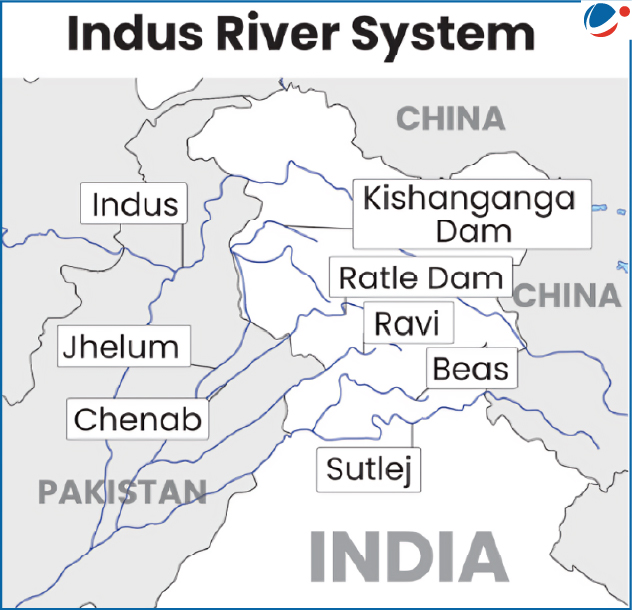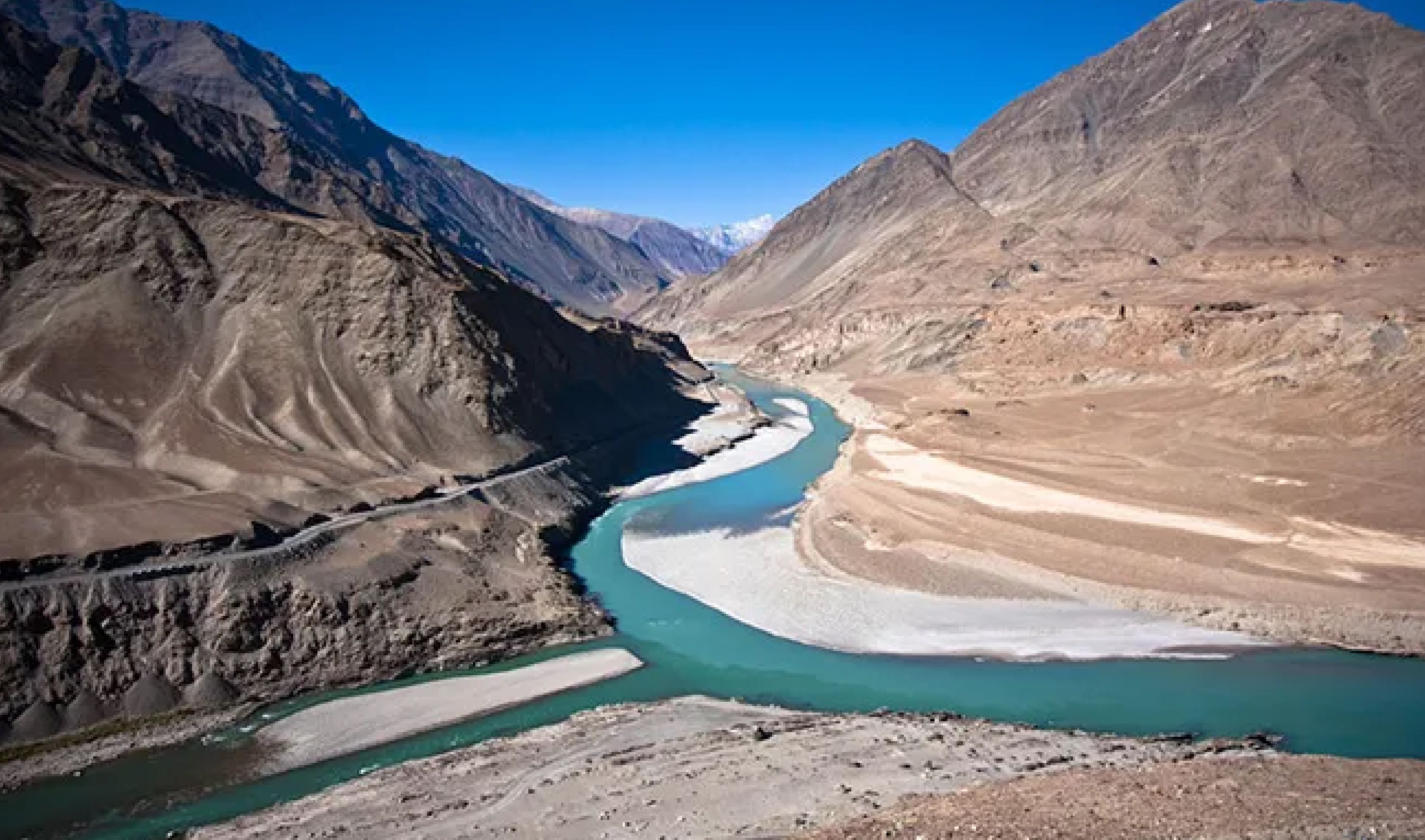Indus Water Treaty (IWT) (1960), brokered by World Bank, was signed between India and Pakistan to determine the distribution of the waters of River Indus and its tributaries.

Key Provisions of the Treaty
- Allocation: Treaty allocates three Eastern Rivers (Beas, Ravi, Sutlej) to India, and three Western Rivers (Indus, Chenab, Jhelum) to Pakistan.
- It allows each country certain uses on the rivers allocated to the other.
- Hence, India is permitted to construct hydroelectric power facilities on Western rivers subject to constraints including design specifications provided in the Treaty.
- Settlement of Differences and Disputes: It provides for a graded three-level dispute settlement mechanism:
- Permanent Indus Commission: Platform for direct negotiation.
- Neutral Expert: Appointed by the World Bank to address technical disagreements.
- Court of Arbitration (PCA): At higher level to resolve issues that cannot be solved through earlier steps.
Present Dispute
- Background: It deals with the design features of the Kishenganga (330 MW) and Ratle (850MW) hydroelectric power plants, located in India on tributaries of Jhelum and Chenab respectively.
- Opposing Views: In 2016, Pakistan proposed adjudication by Court of Arbitration, while India prefers adjudication by the Neutral Expert.
Significance of the IWT
|





